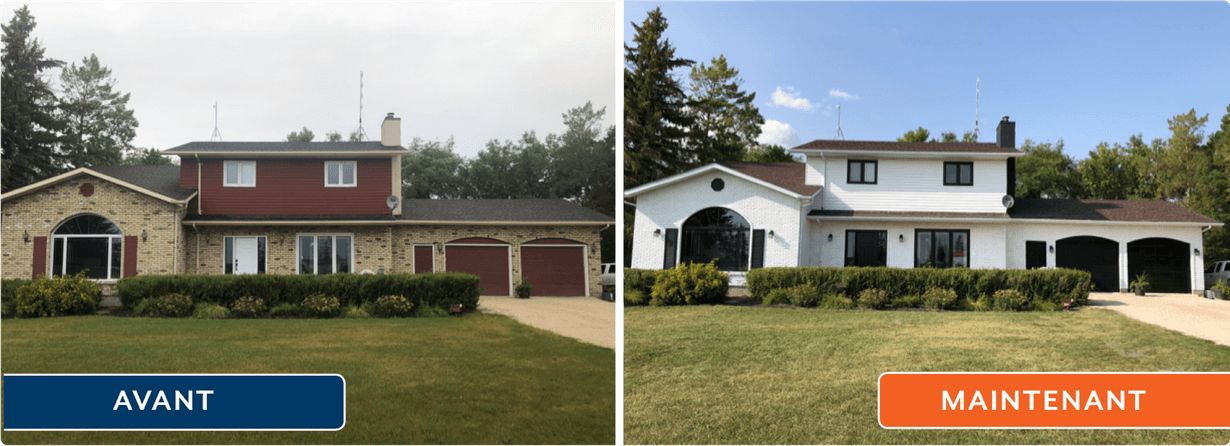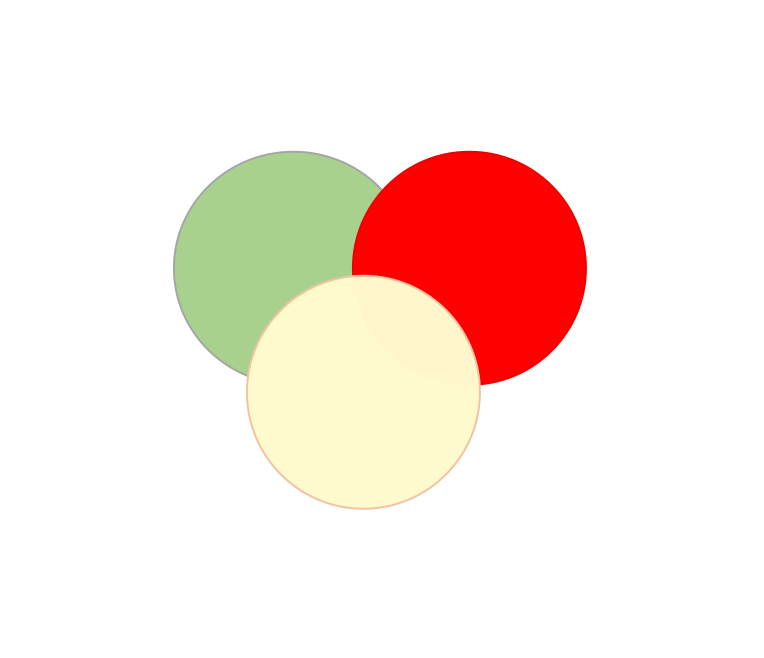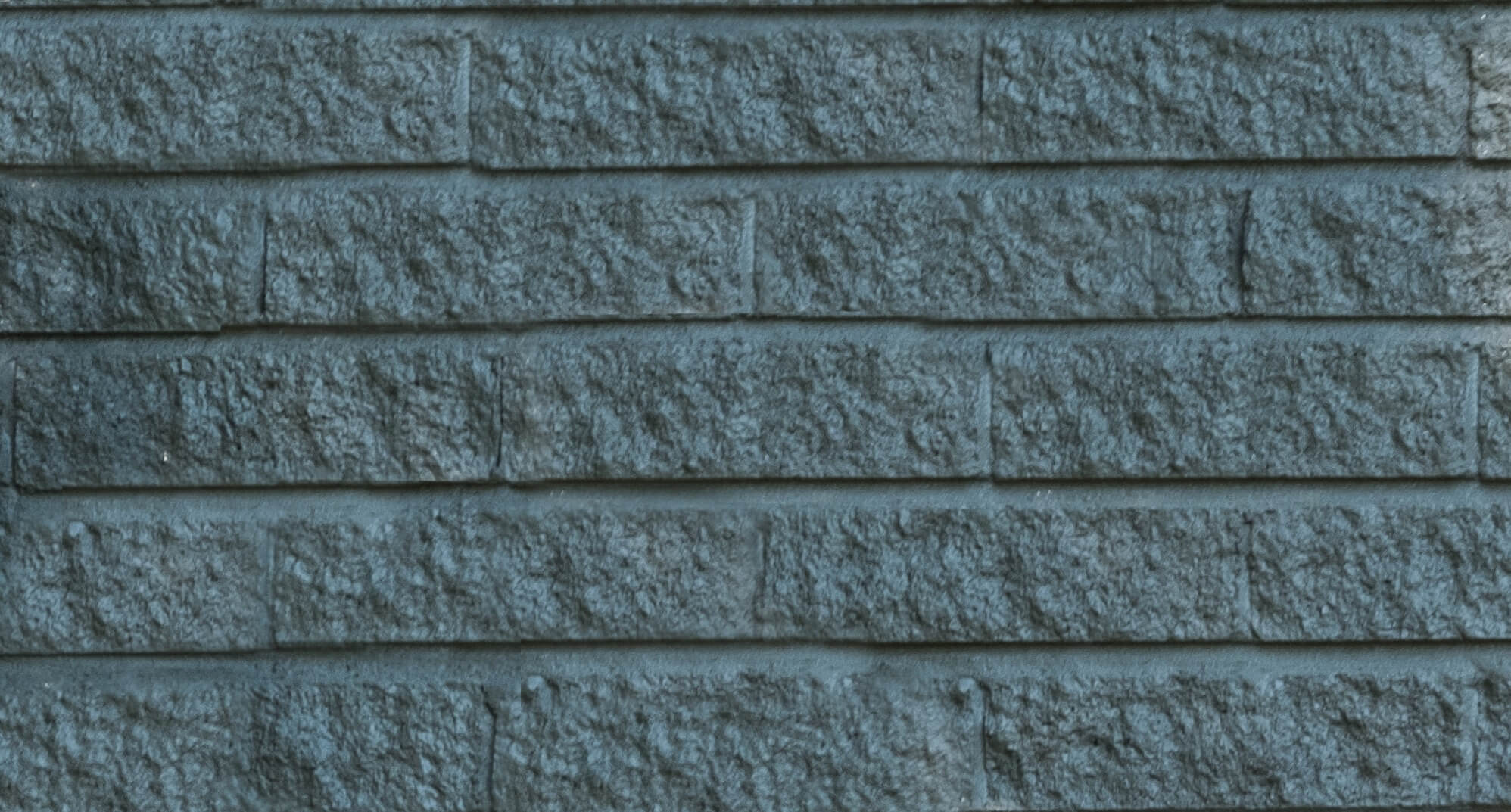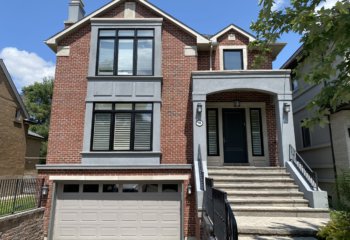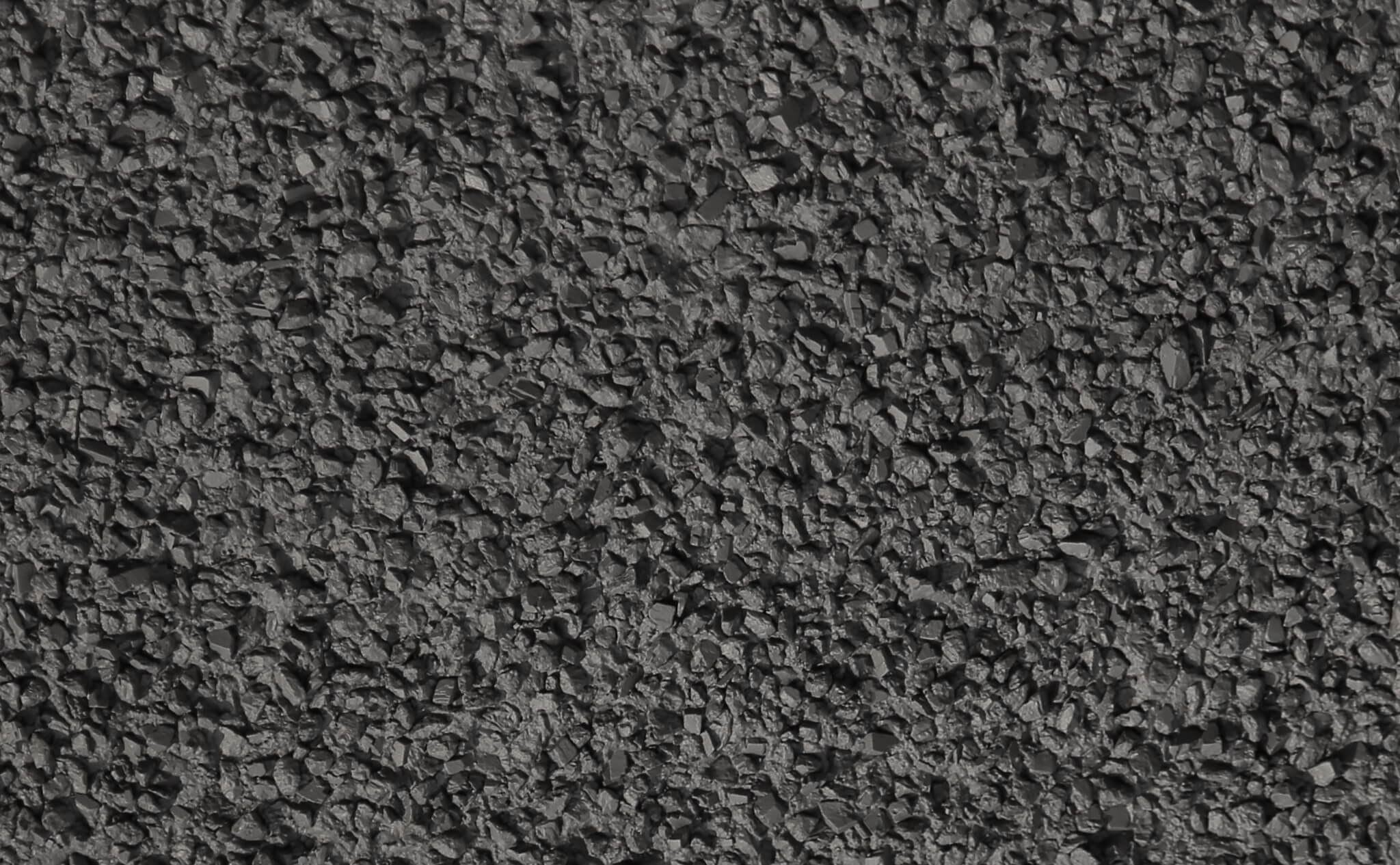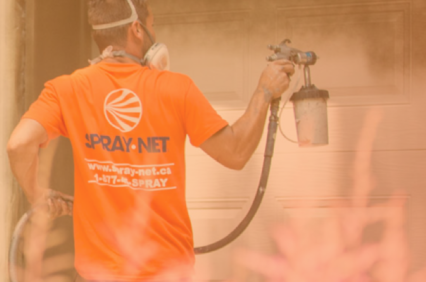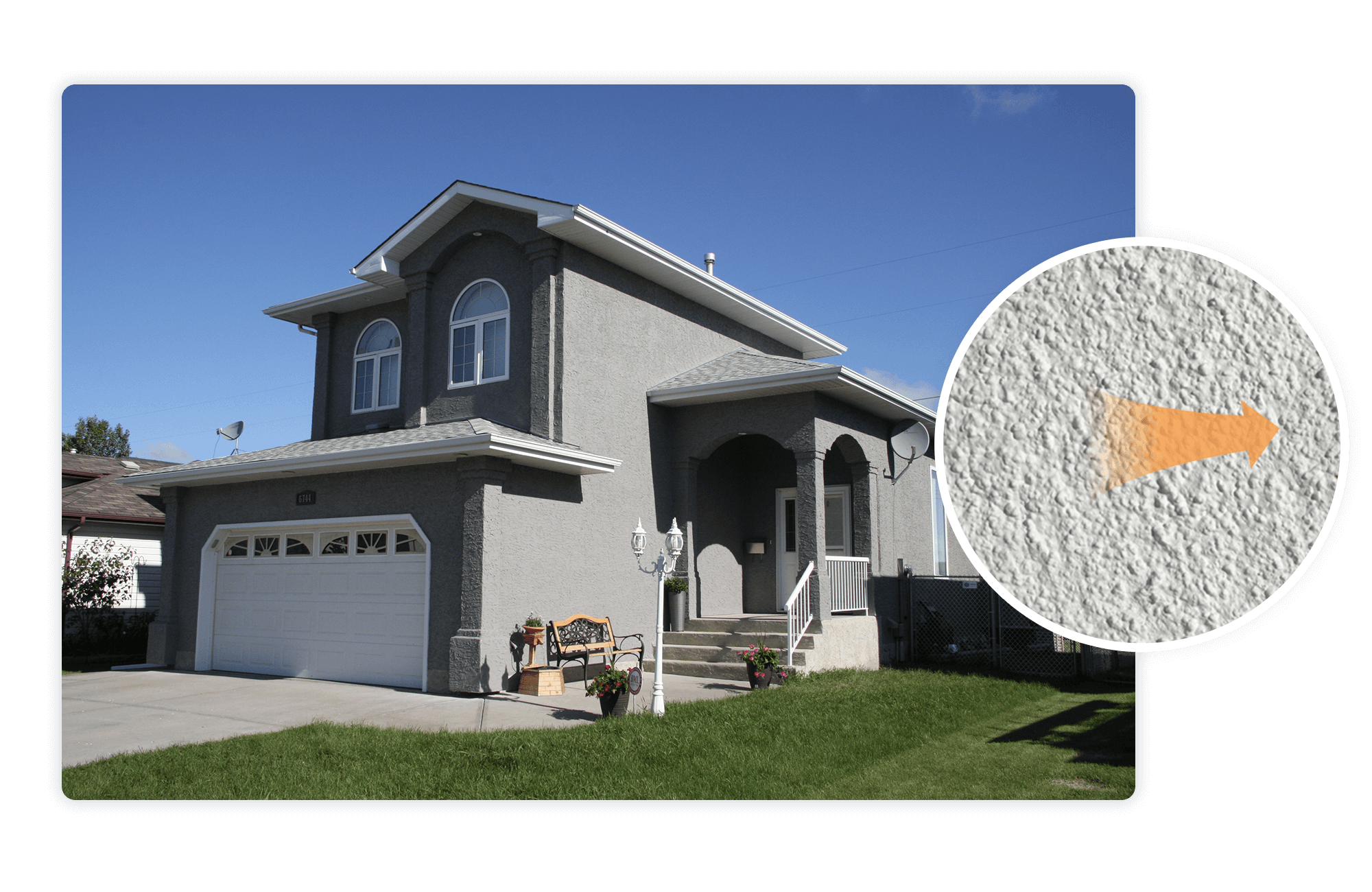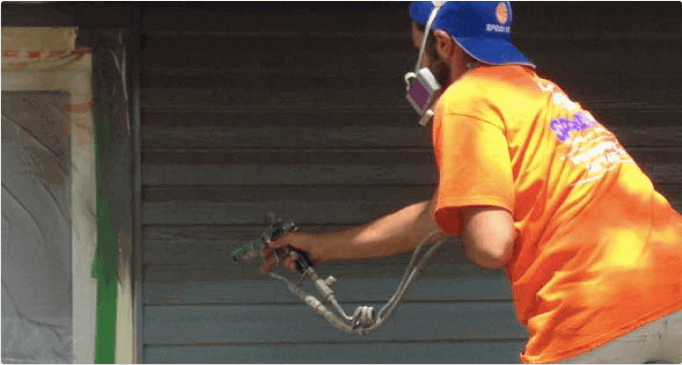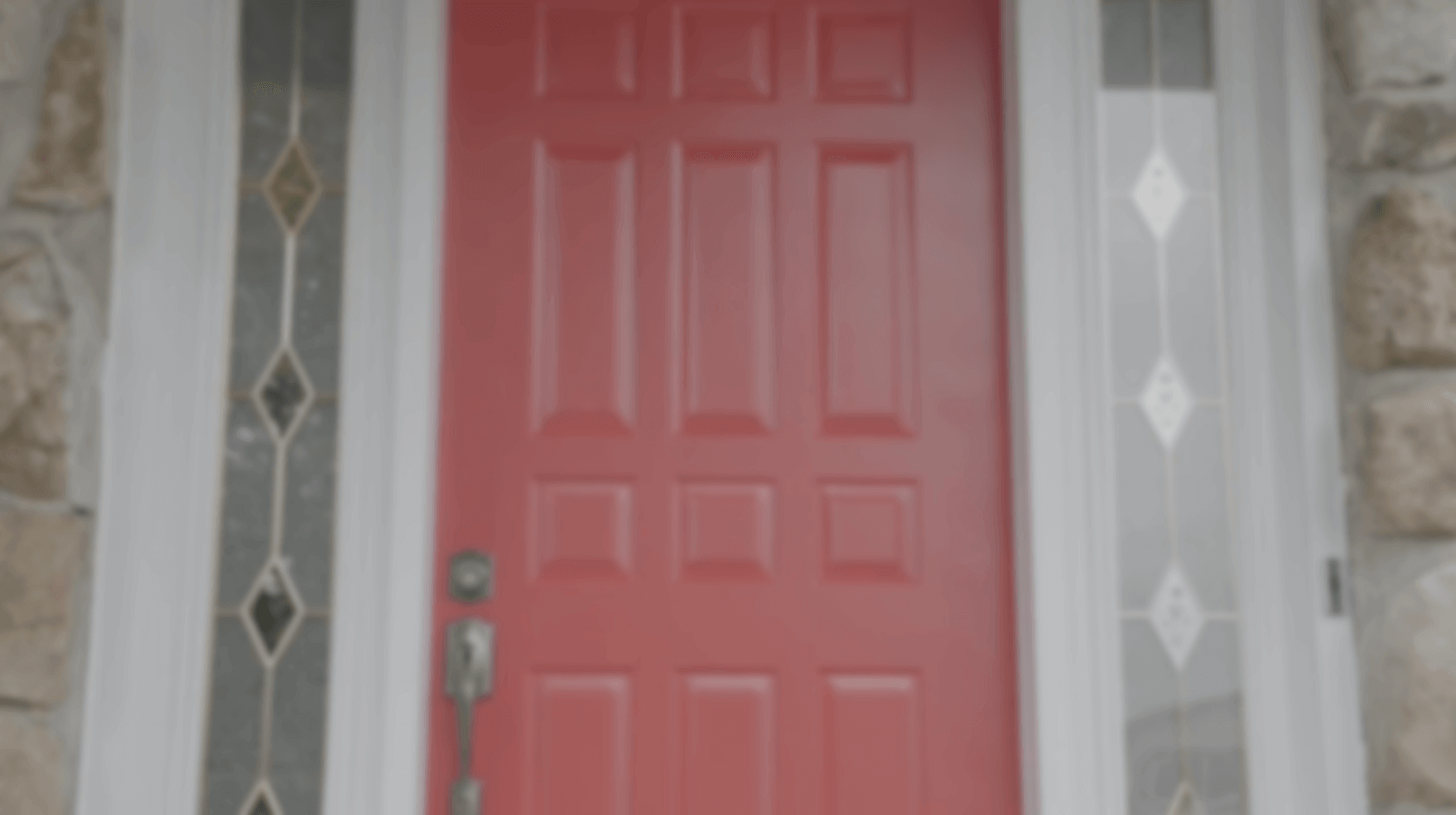You’ve found us online and you’ve read about how we deliver a permanent exterior house painting service. You’re probably thinking, “sounds too good to be true.” Well, we’re here to tell you that it’s not and it’s indeed possible!
When you purchase new exterior siding, doors and windows, whether plain white or colored, they’ve actually been painted in a factory. When it comes to exterior house painting, you’ll hear a lot about surface preparation and using good quality paint. While both are crucial components of any good paint job, they are only two parts of what is actually a more complex story.
Have you ever wondered why, even after you’ve properly prepped a surface, the paint peels and requires repainting every 3-5 years? What about brand-new siding, doors and windows- how come they never peel? Look no further, because we’ve got your answers. So, let’s dive right into the good stuff and reveal how we deliver a permanent exterior house painting service to our customers.
First things first. What does it mean for paint to be permanent? The purpose of any paint job is to protect and beautify the surface being painted. As a result, we must define a permanent exterior paint job as one that will not peel, since peeling paint no longer provides protection to the surface and definitely doesn’t look appealing. We won’t include fade resistance in our definition, since there are no known pigments on earth that can resist fading indefinitely. You’ll notice that even brand-new siding will fade. There are superior quality pigments that can resist fading much better than others, but even with the best pigment technology fading depends on duration and intensity of direct sun exposure. So, for the sake of our discussion, permanent = will not peel.
The 5 elements of permanent exterior house painting
In developing our permanent exterior paint solution, we’ve discovered 5 important elements that contribute to successfully achieving a permanent factory finish outside the controlled environment of the paint factory that won’t peel. Each of these 5 elements work together to create the perfect synergy that results in a permanent exterior paint job. Any kink in this chain will cause an exterior house painting failure, aka peeling.
1. THE SURFACE: the rule of thumb when trying to achieve a permanent exterior paint job is to ensure that the surface being painted wasn’t a previous fail. If this is the case, the failing paint job must be completely stripped from the surface to ensure optimal paint adhesion. After all, you want the fresh coat of paint to adhere directly onto the surface and not an old, peeling coat of paint. It’s extremely difficult to remove every single last trace of paint from a substrate, which is why we avoid painting previously repainted surfaces. Not to mention, it’s also extremely time-consuming (no longer keeping your project cost-effective).
While anything can be painted, not all surfaces can be painted for permanent results…and this is what we do. We deliver a highly niche service that offers homeowners a real alternative to replacing exterior siding, doors and windows. So, if we know that a specific surface will require maintenance 2-5 years down the line, we simply won’t paint it.
To ensure a permanent finish, we are selective in the surfaces we choose to paint, as not all surfaces can stand up to a coat of paint in the same way. “Dead” wood can be recoated for a permanent finish, as this specific type of wood resembles the characteristics of aluminum or vinyl siding (aka hardie board). Normal “living” wood, on the other hand, cannot yield permanent results regardless of the methods and products used. Living wood needs to breathe and will expand and contract, often beyond the limitations of most paint films. With time, this poses a high risk for paint failure. Many homeowners ask us why we don’t paint wood and the answer is because it requires maintenance and repainting, making it extremely difficult to deliver a permanent finish.
2. THE WEATHER: water-based paint is essentially solids plus water. For the paint film to be considered dry, the water must evaporate leaving only behind the solids (the binders, pigments and additives). The varying nature of the weather can make it extremely difficult to reach the ideal parameters for proper water evaporation (aka, curing) to successfully occur, hence the potential for peeling paint 2-3 years down the line. Just read the back of a paint label for yourself and you’ll notice extremely restrictive conditions for “ideal” paint application. Avoid extreme, dry heat. Avoid high humidity. Only paint between 15-25 degrees Celsius. Avoid painting on days where it might rain within 8 hours. The list, unfortunately, goes on.
To combat the effects that weather and temperature can have on a paint job, we’ve formulated weather-adjustable exterior paints and coatings. Our propriety technology, The Spray-Network, detects the weather parameters on the very day of your painting project. This allows us to then adjust paint formulation directly on-site to deal with the effects of real-time heat, humidity, wind and rain. Unlike painting in a factory, we can’t control the environment in which we’re painting, so we’ve created a high-performance line of exterior paints, coatings and stains that gives us unprecedented flexibility to counterbalance the restrictive temporal conditions needed for a permanent paint job.
3. THE CHEMISTRY: the chemistry or “make-up” of the actual paint is extremely important for both initial application and permanent adhesion. Most exterior paints say they can be applied on many different surfaces. If you take a stroll through your local hardware store, you’ll find a premium latex exterior paint that can be applied to stucco, aluminum, vinyl, brick and even wood. You might think that a versatile product is good thing, but when it comes to exterior house painting and the many different substrates that protect a home, you don’t want versatility. We’re not saying that these paints aren’t good and can’t work; but as the saying goes, “a jack of all trades is a master of none.” Vinyl siding, made from plastic, has completely different properties than cement-based stucco. Siding needs to be washable. Stucco needs to be flexible and permeable. Doors need to be scratch-resistant. Brick needs to breathe and should be stained. We hate to be the bearer of bad news, but there is no one product that can effectively do all of these things.
On the other hand, we’ve formulated a unique exterior paint for each of the individual surfaces that we renew. By creating surface-tailored coatings, we provide each surface with what it needs. This creates the ideal conditions for the coating to fully bond to the substrate. You could say that we essentially re-finish rather than re-paint the surface by restoring its original properties for a permanent finish that looks like-new and not repainted.
4. THE PREPARATION: Surface preparation is something that you’ve read about time and time again. It’s usually listed as the first (and sometimes the most vital) step in successfully tackling a residential exterior house painting project. Contrary to common belief, surface preparation doesn’t simply mean “cleaning.” It’s about properly treating the surface so that it can “receive” the coating for optimal adhesion. This involves:
- Performing a water-scrape to remove all traces of powder and chalk from aluminum siding.
- Softening and opening the pores of vinyl windows using our proprietary prepping solution without causing a chemical reaction with the paint.
- Neutralizing brick prior to applying our opaque brick stain.
- Degreasing all surfaces, in some cases even scuffing and sanding in order to bring down gloss.
So, it’s important to recognize that proper surface preparation goes beyond simply cleaning and removing visible dirt and debris.
5. THE APPLICATION: unlike applying paint with a brush and roller, spray application results in a smooth, flawless, streak-free finish… when done right. Exterior paints have varying levels of viscosity or thickness. Take for example an elastomeric paint for stucco. To properly fill the nooks and crannies of this cement-based surface, an exterior paint for stucco must be thicker than an exterior paint for doors and windows. So, while proper technique is required to avoid streaks, runs and overspray, the coating and spray equipment must be compatible with one another to ensure flawless application. Sprayed too thick and you’ll see drips. Sprayed too thin and you won’t achieve effective surface protection.
To guarantee perfect application, our exterior paints and coatings are specifically tailored for our spray equipment in order to achieve ideal coverage and optimal protection at specific air pressures and flow rates. Not to mention, a huge advantage of spray application with the right paint is that you can achieve optimal thickness in just one coat, escaping the issues that can arise with inter-coat adhesion. The result is a smooth, even coat of paint that wraps the surface for permanent results that won’t peel.
And now, here’s the real secret behind our permanent exterior house painting solution…
Our process goes from formulation to application. Since paint manufacturers make paint and exterior painters apply it, there is a fundamental missing link between the two processes. We fill both of these roles and that’s precisely how we’re different and how we bring permanent results right to your doorstep. We’re not in the business of selling paint. We’re in the business of enhancing curb appeal. Unlike paint manufacturers who only make paint, we make it and apply it. Therefore, we formulate our coatings for performance and not for cost-cutting, giving us the ability to use premium, higher quality materials in our paint. After all, our bread and butter comes from revamping your home and not from the paint itself. So, “why not just go the easy route,” you ask? Because by getting into the nitty-gritty technical stuff, we’re able to offer you, our customers, a unique and beneficial permanent exterior paint solution that serves as a real and cost-effective alternative to replacing your siding, stucco, brick, doors and windows to really transform the look of your home!
Subscribe to our blog & newsletter.
This is the advantage of subscribing to our blog.





